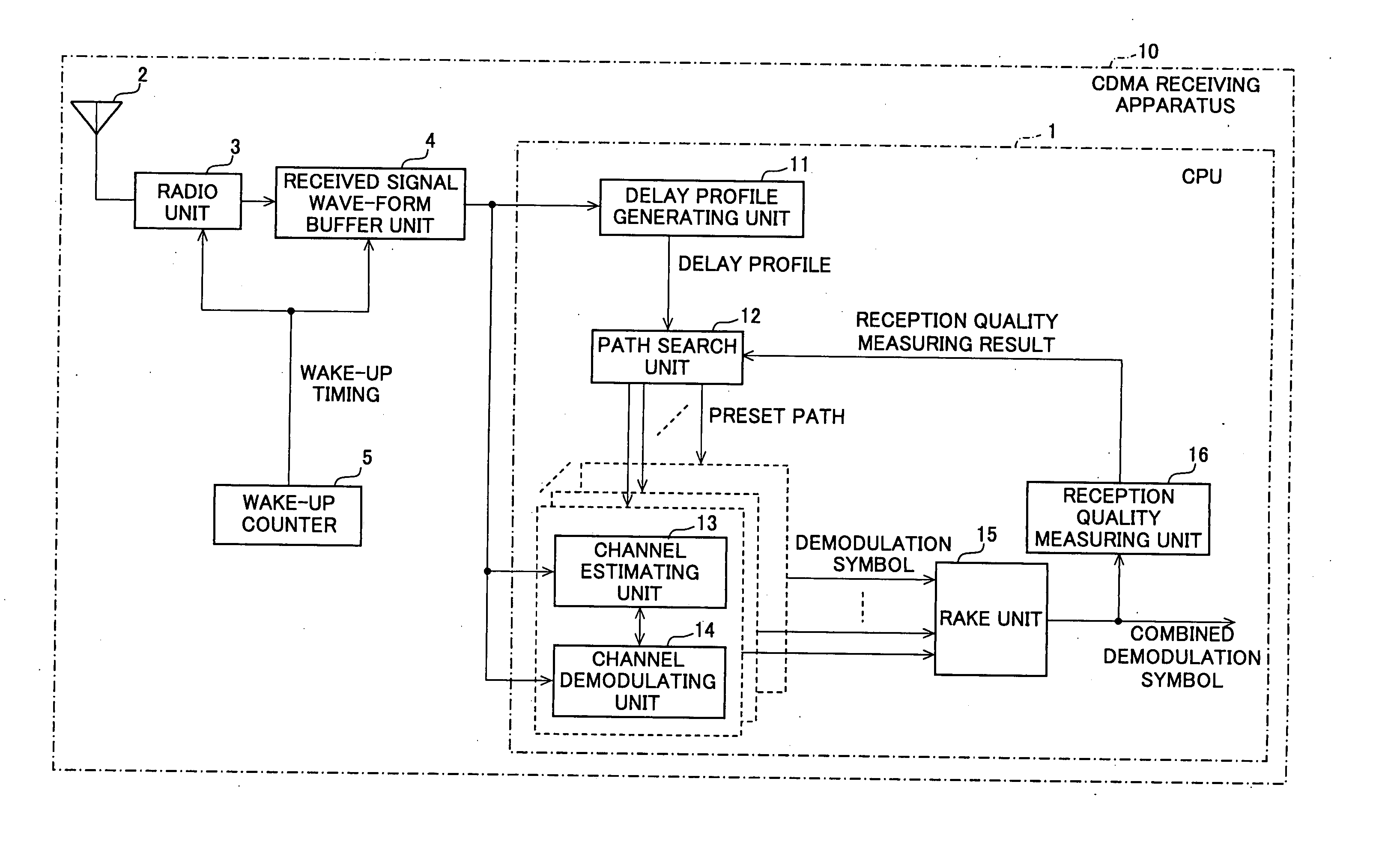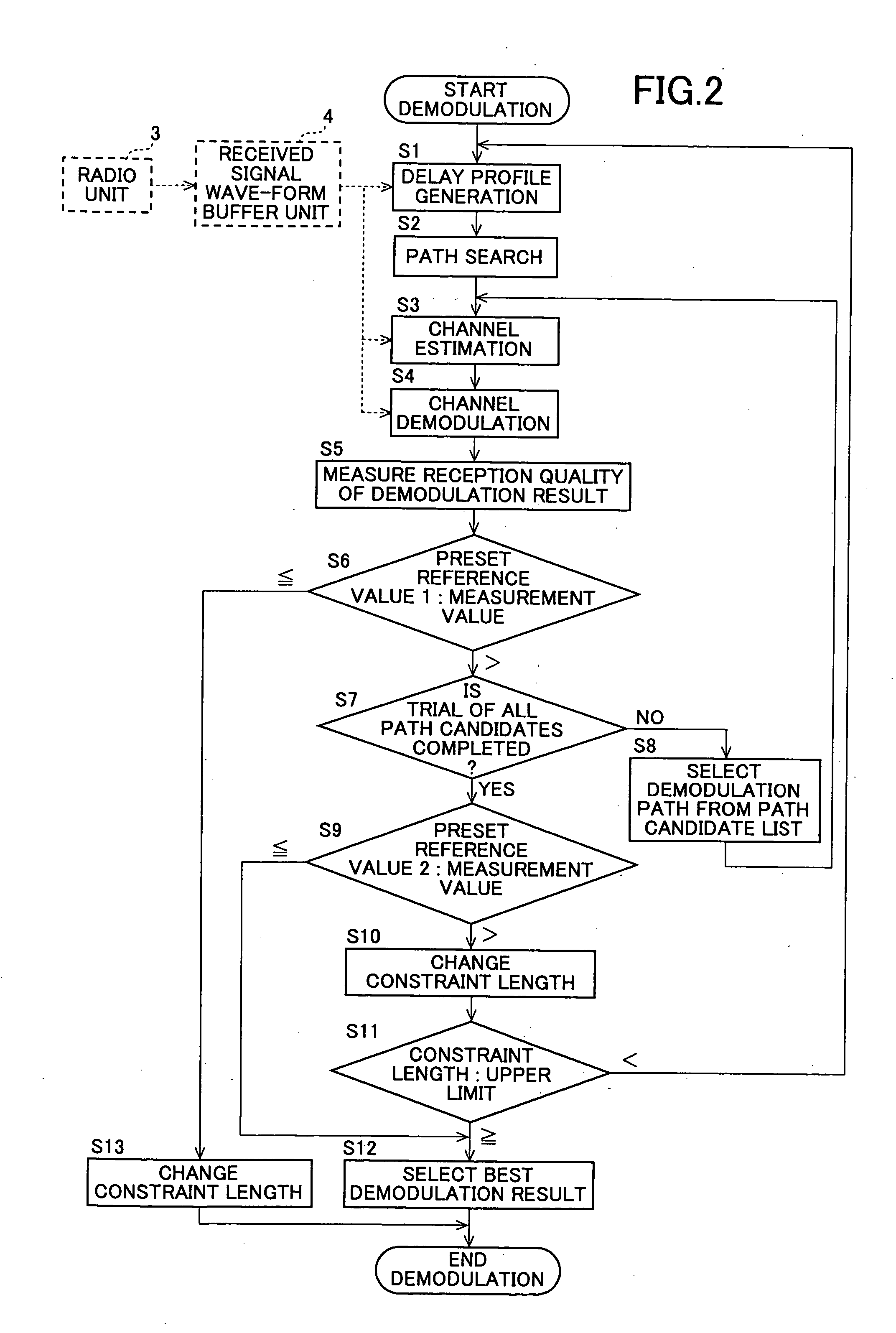CDMA receiving apparatus, method, program and recording medium
a technology of cdma and receiving apparatus, applied in the direction of electrical apparatus, digital transmission, radio transmission, etc., can solve the problems of inability to perform demodulation adaptation to the abruptly changed receiving environment, inability to determine the cell selection, and difficulty in discriminating between signal power and noise power peaks, so as to improve the reception error characteristics
- Summary
- Abstract
- Description
- Claims
- Application Information
AI Technical Summary
Benefits of technology
Problems solved by technology
Method used
Image
Examples
Embodiment Construction
[0052] The CDMA receiving apparatus, CDMA receiving method, CDMA receiving program and program recording medium of the present invention comprises a received signal wave-form buffer unit which is capable of recording received signal wave-form data in which the amplitude of the received signal wave-form is digitalized on different recording areas for each unit processing length. A delay profile which represents the signal power distribution relative to the delay time on a path is generated by multiplying said received signal wave-form data by a demodulation code and determining a sum for a time interval which is given as a desired constraint length. The timing position at which the signal power peaks is determined as a path candidate used for signal demodulation based upon the generated delay profile. A plurality of demodulation paths which is as many as the number of predetermined demodulation paths are selected from said path candidates. After each demodulation symbol of demodulati...
PUM
 Login to View More
Login to View More Abstract
Description
Claims
Application Information
 Login to View More
Login to View More - R&D
- Intellectual Property
- Life Sciences
- Materials
- Tech Scout
- Unparalleled Data Quality
- Higher Quality Content
- 60% Fewer Hallucinations
Browse by: Latest US Patents, China's latest patents, Technical Efficacy Thesaurus, Application Domain, Technology Topic, Popular Technical Reports.
© 2025 PatSnap. All rights reserved.Legal|Privacy policy|Modern Slavery Act Transparency Statement|Sitemap|About US| Contact US: help@patsnap.com



